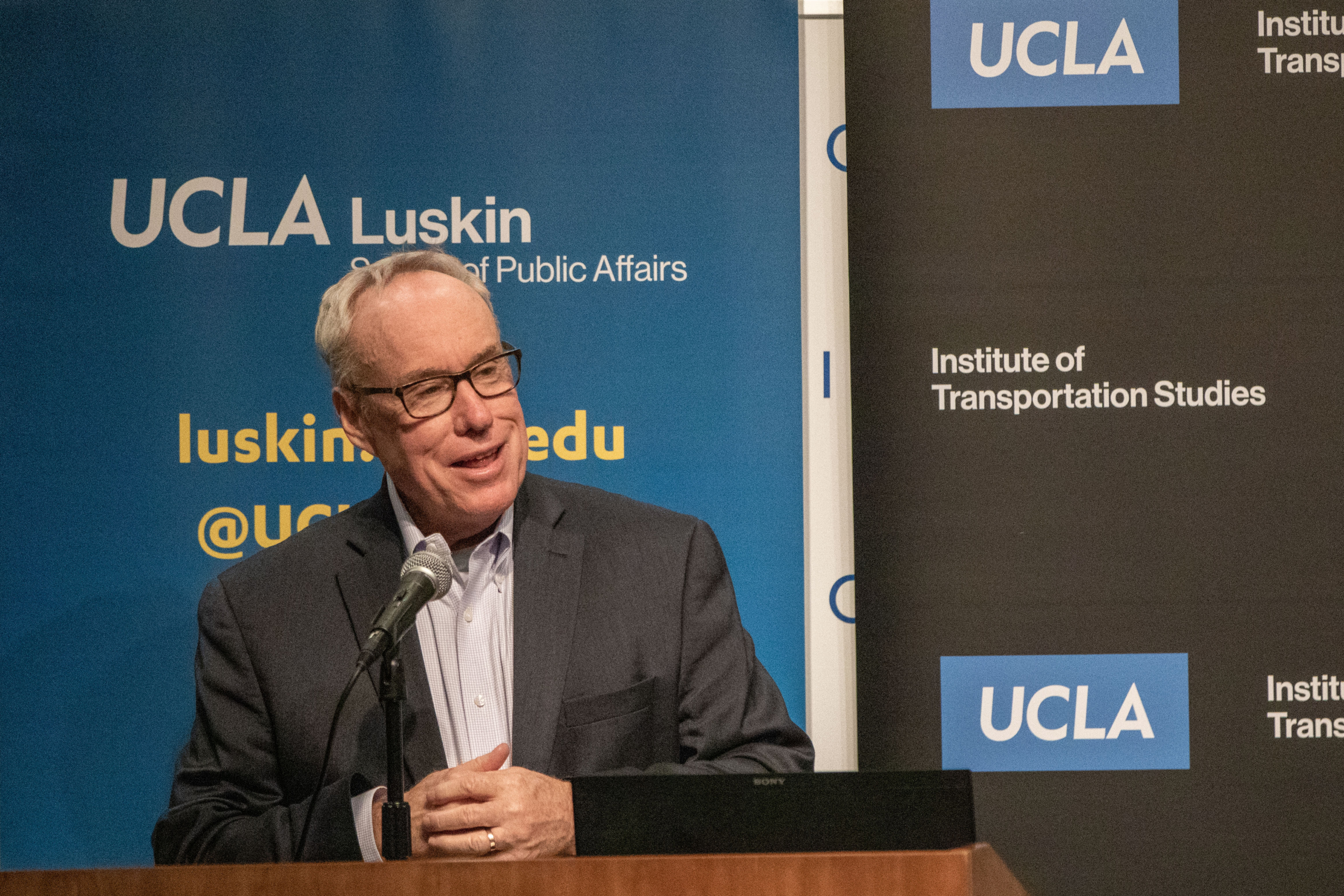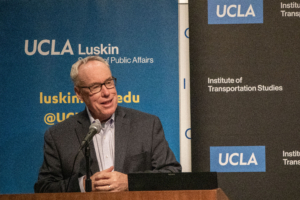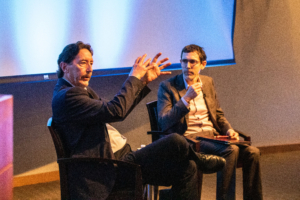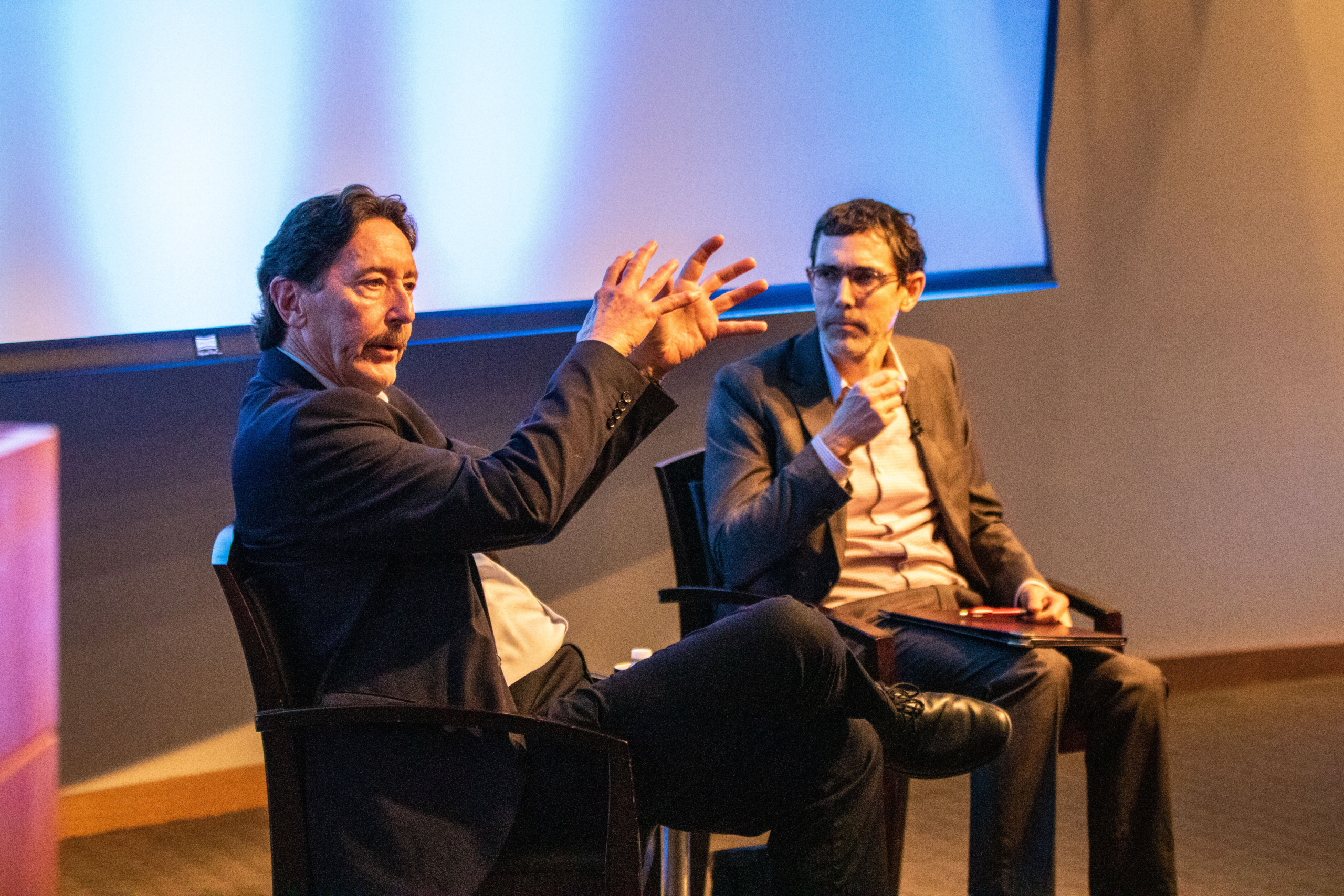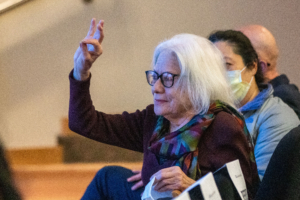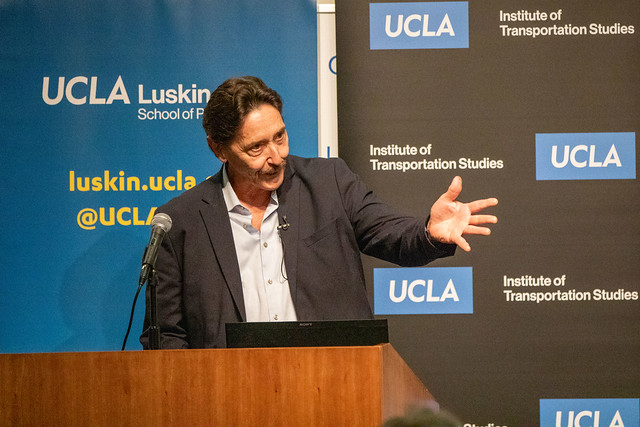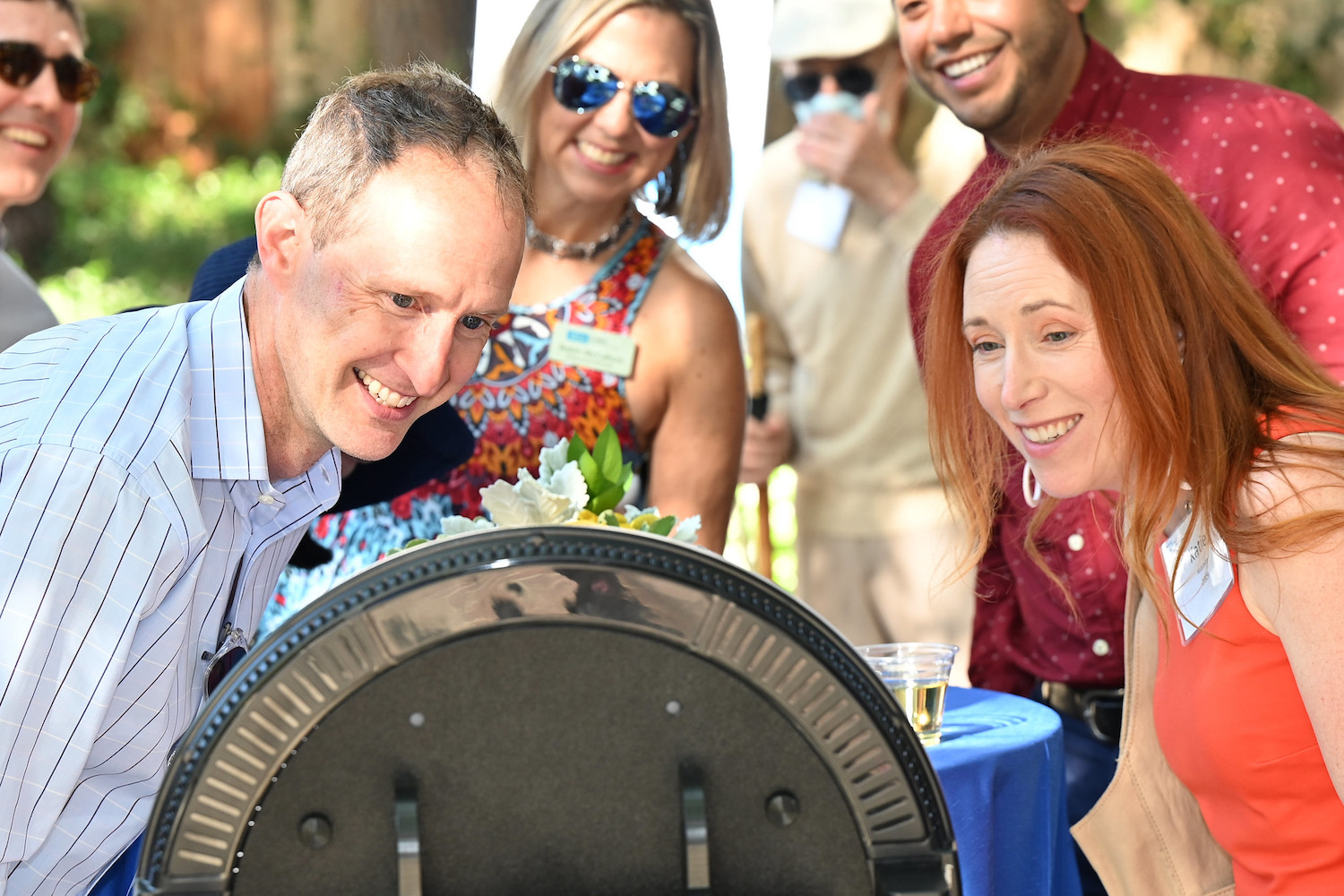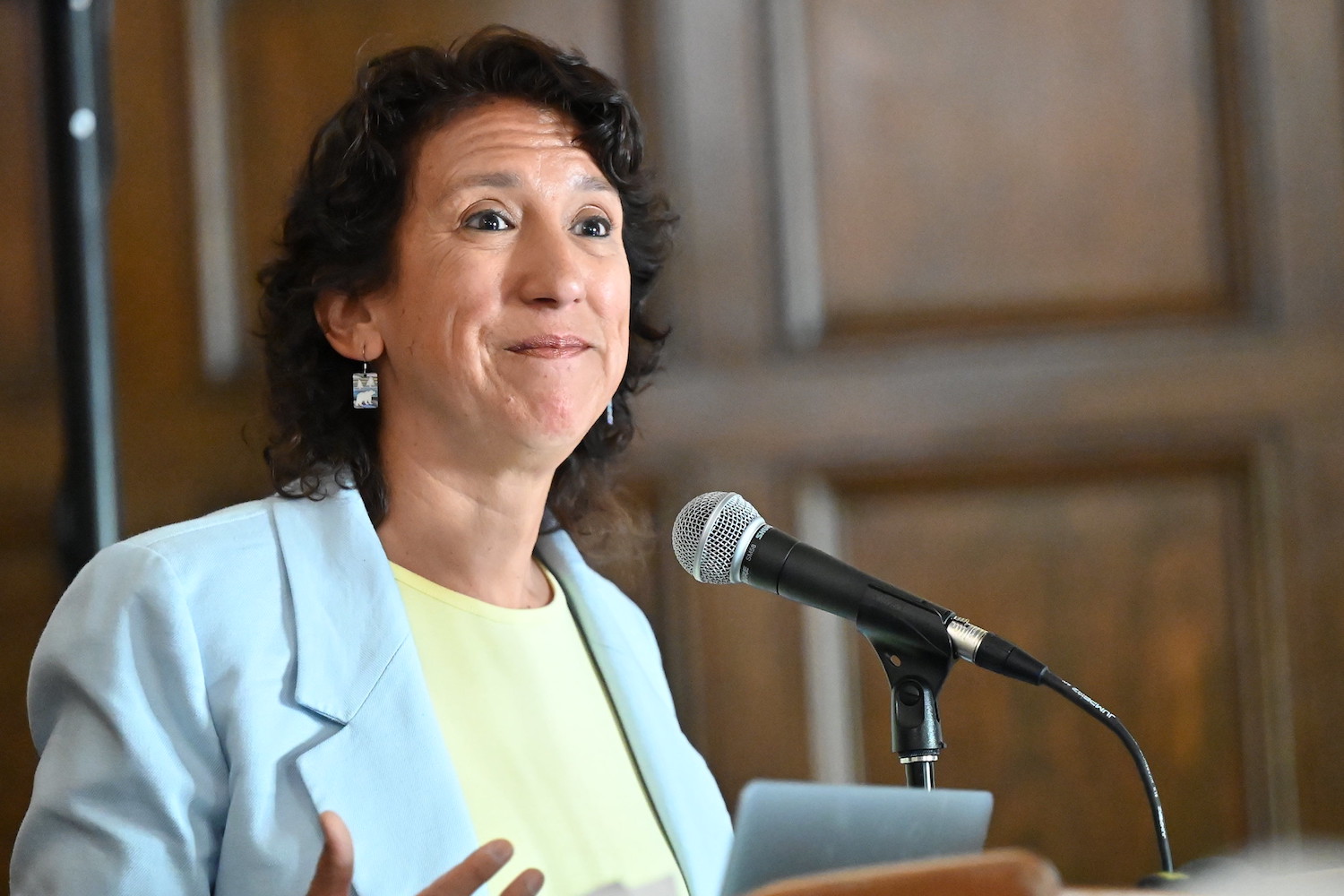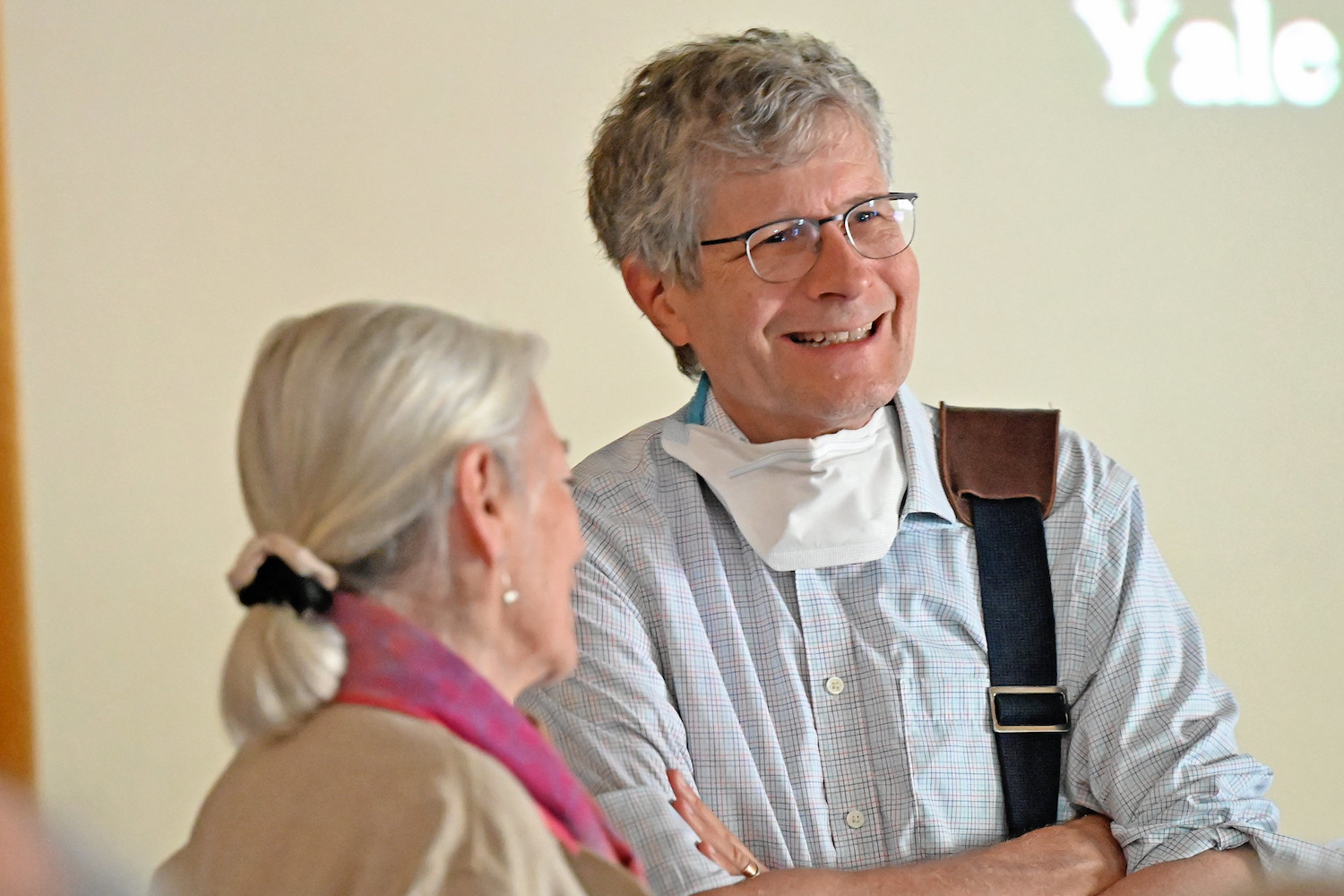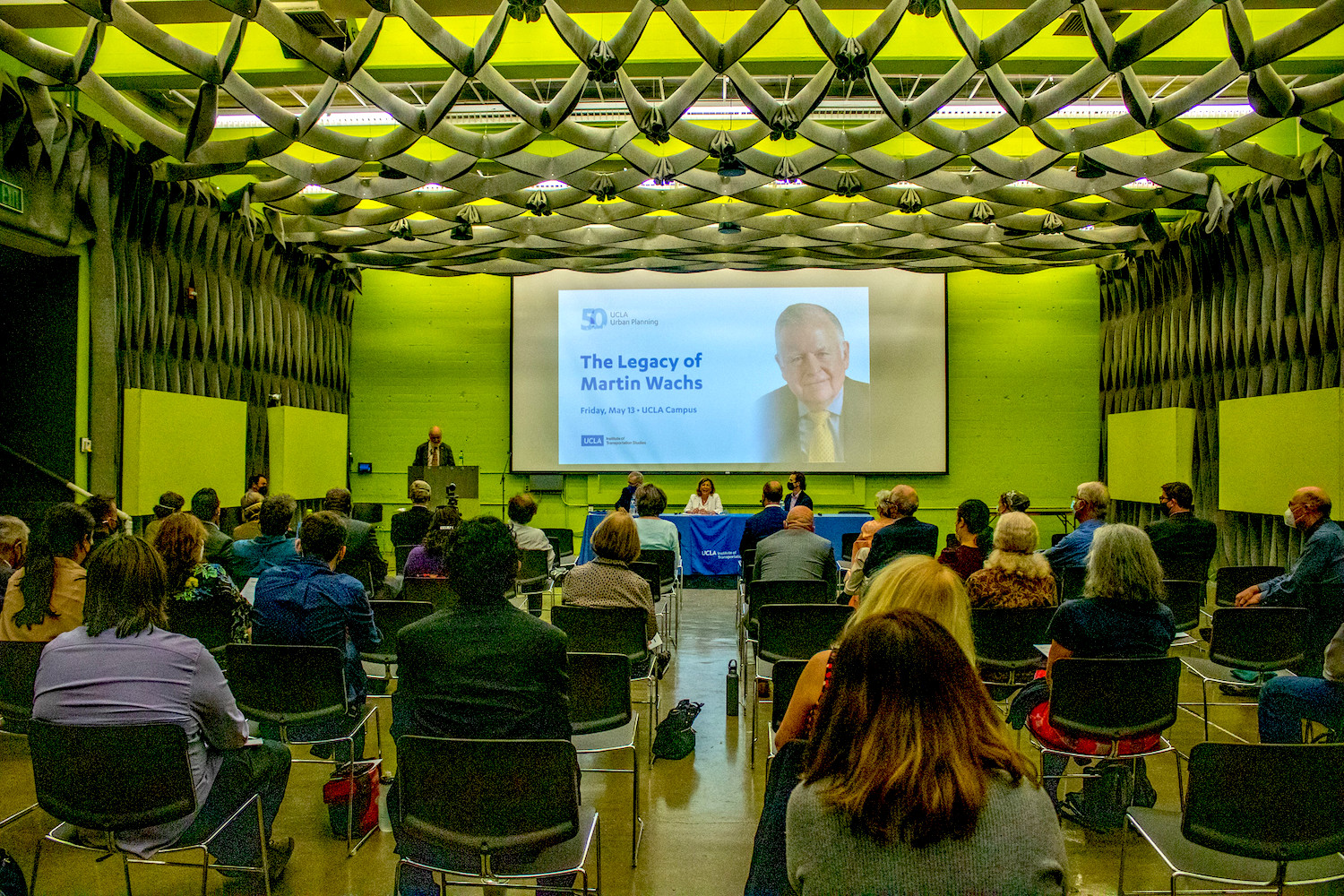The Past, Present and Future of Transportation Access Author and scholar Robert Cervero says long-ago research by his late mentor, Martin Wachs, still has relevance for today’s planners and policymakers
By Les Dunseith
When UC Berkeley Professor Emeritus Robert Cervero was asked to deliver the 15th annual Martin Wachs Distinguished Lecture, he was initially hesitant.
“But it dawned on me that a really important foundational piece of work that was published one-half century ago, 50 years ago, was Marty Wach’s paper on accessibility,” said Cervero during a Feb. 28 presentation in honor of his former urban planning mentor and colleague. “And why don’t I wrap my talk … around the theme of that paper and try to show how it really shaped my own research in this field and, I would suggest, generations of other people as well.”
Titled “Physical Accessibility as a Social Indicator,” the article by Wachs and T. Gordon Kumagai continues to influence planning policy, said Cervero, who earned his doctorate in urban planning at UCLA in 1980 and joined UC Berkeley’s city and regional planning faculty, where he remained until 2016.
“The article really highlights a number of different contexts of which accessibility should really be an overarching principle that guides what we do in this field of urban planning and transportation,” Cervero said.
During introductory remarks, UCLA Luskin Professor Brian Taylor mentioned that the lecture was the first in the series to be presented without Wachs himself in attendance. The longtime urban planning scholar taught at both UCLA and UC Berkeley before his death in 2021. Members of the Wachs family, including his wife, Helen, were in attendance.
Presented in conjunction with the Luskin Lecture Series, Cervero’s talk was titled, “Accessibility, Social Equity, and Contemporary Policy Debates,” and he spoke about how the concepts put forth 50 years before still have relevance today, especially in regard to how access to transportation contributes to the well-being of people living in cities.
“Marty made the point with his co-author that this sensibility happens at multiple scales. It’s regional access to jobs or medical facilities, but it’s also at the micro-scale of ‘Do you have access to, say, a bus?’” said Cervero, who said he built on this notion in his own research about socioeconomic matching in terms of the realities of transportation access. A person might live in a transit-rich area, for example, “but if you’re in a wheelchair, and the buses don’t have wheelchair ramps, then you don’t have great transit access.”
In the 1970s, few scholars prior to Wachs had written about these types of human components to transportation access. “To me, it was truly revolutionary,” Cervero said.
For example, Cervero found that people living in central city neighborhoods often bear disproportionately higher costs for transportation services. Because they make frequent off-peak trips for necessities like groceries, they end up paying a lot more than affluent suburbanites taking fewer trips over longer distances.
The disparity also was apparent when he and other researchers looked at why people who seemed to have public transit options readily available to them choose to rely primarily on their vehicles instead.
“A lot of these individuals were people like working moms who had very complex travel patterns,” Cervero said. “They have a child to drop off at the child care center and then go to their job. They were taking vocational courses at night and had to get there at a time when public transit service was bad. They had split-shift weekend jobs when transit services are notoriously lousy. So, they need a car.”
In looking at the concepts articulated by Wachs so many years before, Cervero also found lessons that can be applied to some of today’s planning and policy debates. One example is the idea of a “15-minute city,” a place designed by planners to ensure that most people have ready access not just to work but to the other necessities of daily life within 15 minutes of their homes.
The idea is laudable, but it has its critics.
“If you really insist on this, you potentially stifle economic competition. Companies don’t want to thinly distribute activities everywhere,” said Cervero, as some in the audience of UCLA faculty, staff, students and alumni nodded their heads in agreement. “So, this idea of a 15-minute city really runs in the face of what economists have long argued are important economic drivers towards the economic growth and performance of a city.”
In his career, Cervero has consulted on transportation and urban planning projects worldwide, including recently in Singapore. “They’ve come up with this idea of the 20-minute town and the 45-minute city. You can reach a lot of things within 20 minutes. But when it comes to employment, when it comes to going to see a sporting event or buying a car or going to a regional hospital with specialized medical care, that’s a 45-minute city. So, I think we’re getting a lot better articulation and sensible policy.”
During a Q&A session after his formal presentation, Cervero spoke with UCLA Professor Adam Millard-Ball and took questions from the audience. When asked to talk more about his global experience, he explained that much of the scholarly work to date has focused on urban life in the United States and Europe.
Some of today’s researchers focus on climate change impacts and how to find “a little more efficiency out of electric mobility or ridesharing or whatever. But in the grand scheme of things, over the next 20 or 30 years, 80% to 90% of urbanization is not going to happen in the Global North. It’s going to be in south Asia and Africa, and whatever happens there is going to swamp any and everything we do here, particularly in the rates of carbon emissions and so forth.”
In the developed world, the focus is often on how to get people from the central cores to jobs in suburbia. That’s less true in places like Mexico, South America, Indonesia and other parts of Asia.
“It’s a totally different landscape. Most of the poor are not in cities but in far-flung suburbs or towns. When you’re talking about lack of access, it’s a two- to three-hour, one-way daily commute,” Cervero said. “The amount of time and resources you have to invest is enormous just getting to and from where you need to be in order to have the earnings to cover basic needs.”
He was also asked about the impact of the COVID-19 pandemic and the resulting rise in remote work.
“Historically, we think of physical proximity,” said Cervero, noting that when workers have highly specialized skill sets they depend on interactions in teams of people with other specialized skills to thrive.
“The whole idea of access being tied to location is being somewhat thrown around by all these rapidly evolving, powerful kinds of technological advances,” he said. “Technology is transforming. The notion of physical proximity as we all know it has long driven the idea of cooperation. But maybe it happens less.”
Established by students, the Wachs Lecture Series features prominent and innovative scholars and policymakers in the field of transportation. The UCLA Luskin Lecture series brings together scholars with local and national leaders to discuss solutions to society’s most pressing problems. This event was organized by UCLA’s Luskin School of Public Affairs and Institute of Transportation Studies, for which Taylor has served as the director and Millard-Ball the interim director. Cervero was the director of UC Berkeley’s counterpart to ITS for many years.
View additional photos on Flickr
Watch a recording of the lecture on YouTube
